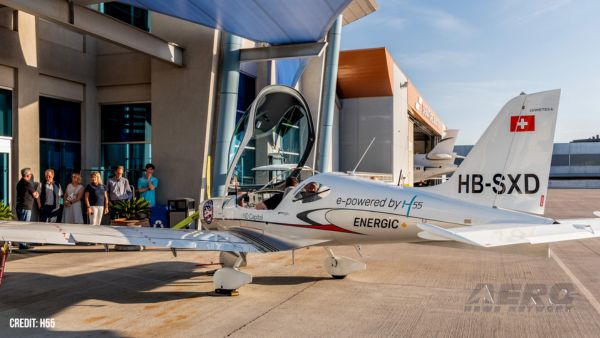Instructor Assumed Control Of The Airplane, Attempted To Restore Power, And Performed A Forced Landing
Location: Berry, Alabama Accident Number: ERA22LA380
Date & Time: August 20, 2022, 11:40 Local Registration: N8797G
Aircraft: Cessna 150 Aircraft Damage: Substantial
Defining Event: Powerplant sys/comp malf/fail Injuries: 2 None
Flight Conducted Under: Part 91: General aviation - Instructional

Analysis: The student pilot and flight instructor reported that the engine lost partial power during cruise flight. The instructor assumed control of the airplane, attempted to restore power, and performed a forced landing to a cleared area of wooded terrain, resulting in substantial damage to the airplane. The postaccident examination of the engine revealed that the exhaust valve in the No. 3 cylinder was stuck in the open position. Based on this finding, it is likely that the partial loss of engine power was the result of the No. 3 cylinder’s stuck exhaust valve. The engine maintenance records were not available for review, and the maintenance history of the engine could not be determined.
Factual Information: On August 20, 2022, about 1140 central daylight time, a Cessna 150F, N8797G, was substantially damaged when it was involved in an accident near Berry, Alabama. The flight instructor and the student pilot were not injured. The airplane was operated as a Title 14 Code of FederalRegulations Part 91 instructional flight.
According to the student pilot, he had the airplane configured in cruise flight when the engine lost partial power. He said, “it felt like one cylinder had quit. It didn’t vibrate like we’d broken a [connecting] rod; it was more like we lost a valve.” The instructor stated that after the partial loss of power, he assumed control of the airplane, adjusted to best glide airspeed, performed remedial actions to restore power, and searched for a suitable forced landing site during the descent. He said he prepared for a landing in trees when, at low altitude, he saw a “cutover” in the trees that had been cleared by local loggers. The instructor maneuvered the airplane into the clearing where it collided with terrain and cut trees, substantially damaging the engine compartment, cabin, and both wings.
The airplane came to rest upright in rough terrain and cut timber. It rested nose-down on the propeller and the right wing tip. The terrain and the airplane’s resting place precluded on-site examination, and the airplane was recovered from the site to a secure facility for the examination.
Before the engine examination could be completed, and before the wreckage was released, the insurance carrier for the airplane sold the wreckage. The buyer, unaware that the airplane had been retained as evidence, began disassembling the airplane for the sale of its parts. Before the airplane was located and arrangements could be made for an engine examination, the airplane’s buyer had partially disassembled the engine.
A Federal Aviation Administration inspector examined the partially disassembled engine. The engine was rotated by hand at the propeller flange and was found “smooth with no issues.” Compression could not be confirmed due to removal of the upper cylinder spark plugs, cylinder covers, push rods, and rocker assemblies.
It could not be determined from which cylinder the spark plugs, push rods, and rocker arms had been removed. Four spark plugs were described as “oily, [with] carbon buildup, corroded and contaminated.” The left magneto was too damaged and disassembled to get it to spark. Sufficient rotation could not be applied to achieve spark on the right magneto. The carburetor was sheared off of the intake manifold.
The No. 1 cylinder was cracked at the rocker box. According to the inspector, the crack extended the full length across the mounting pin section, with the bushings found loose due to the expansion from the crack. Photographs were examined by the manager of product field performance for the engine manufacturer, who stated that the exhaust valve in the No. 3 cylinder was stuck in the open position. With the rockers removed, both valves should be pressed closed by valve spring tension. The exhaust valve stuck in the open position would result in a substantial power loss.
Further, he stated that bushings were not installed in the rocker boxes of the cylinders at the factory. The bushings pictured in the No. 1 cylinder rocker box reflected a repair that had been performed on the cylinder at some time in its service life. According to the manager, the loose bushing would affect the dry lifter clearance and adversely affect valve performance. The engine maintenance records were not available for review, and the maintenance history of the engine could not be determined.
Probable Cause and Findings: The National Transportation Safety Board determines the probable cause(s) of this accident to be -- A partial loss of engine power due to the No. 3 cylinder’s stuck exhaust valve.
 NTSB Prelim: Lee Aviation LLC JA30 SuperStol
NTSB Prelim: Lee Aviation LLC JA30 SuperStol Classic Aero-TV: Curtiss Jenny Build Wows AirVenture Crowds
Classic Aero-TV: Curtiss Jenny Build Wows AirVenture Crowds ANN's Daily Aero-Term (05.30.25): Very High Frequency (VHF)
ANN's Daily Aero-Term (05.30.25): Very High Frequency (VHF) Aero-News: Quote of the Day (05.30.25)
Aero-News: Quote of the Day (05.30.25) Classic Aero-TV: Quest Kodiak Enhances Migration Monitoring Programs
Classic Aero-TV: Quest Kodiak Enhances Migration Monitoring Programs



